#sad 1949 costumes
Text



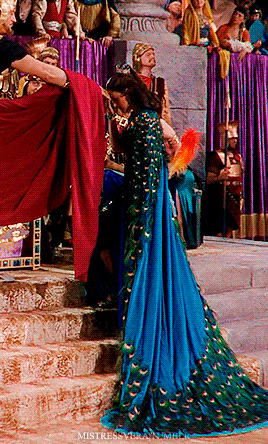

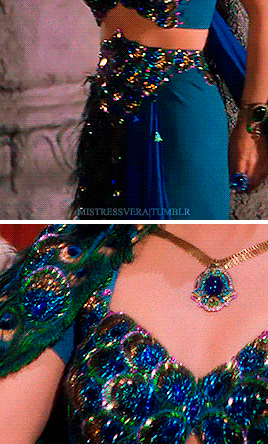

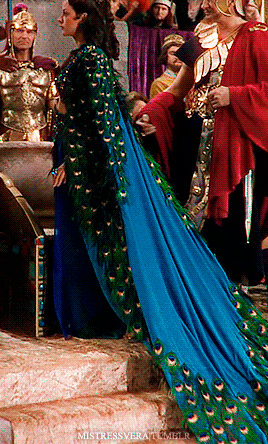
Samson and Delilah (1949) costume appreciation: 1/∞
costume design by Edith Head, Dorothy Jeakins, Elois Jenssen, Gile Steele, Gwen Wakeling
Period dramas | costume appreciation: 6/∞
#samson and delilah#hedy lamarr#costumeedit#costume appreciation#1940s movies#periodedits#perioddramasource#historicwomendaily#period drama costumes#onlyperioddramas#perioddramaedit#sad 1949 costumes#costumesource#gifshistorical#filmedit#perioddramacentral#costumegifs#filmgifs#weloveperioddrama#filmtvedit#filmtvdaily#tvfilmgifs#tvfilmedit#costumes#tvfilmsource#tvfilmdaily
510 notes
·
View notes
Text
My Au William Afton timeline-Part one
This covers his birth all the way to his first death
Born March 2 1949 to Robert “Rob” Afton and Violeta Watson Afton, he has two older siblings, Eleanor Afton , who was born 1945, and Thomas “Tommy” Afton, who was born in 1947. He also has an older half brother named Vincent Paars, who was the product of an affair Violeta had with a American solider in 1944. William was born in York, Britain. His mother was incredibly doting to him, as he was a rainbow baby. This would later fester into extreme narcissism.
His younger Sister Jane is born in 1950
His Younger brothers Robert “Bobby” Afton Junior and Charles “Chuck” Afton are born in 1952
In 1955, Violeta would poison her husband and children, with the exception of William and Vincent, who lived with his fathers wife. Eleanor would survive, and as a result, be sent away to a catholic school for girls. William was 6 years old.
On November 1st, 1956, when William was seven, they would move to London, where Violeta would meet Oscar Anderson.
On February 9th, 1957, Violeta would Marry Oscar after only three months of dating. This event would anger William. Oscar would go on to verbally abuse him.
On April 14th, 1957, William would kill a small rabbit on his school playground, causing him to be expelled from the school, he would later switch to a private school. He would continue to kill small animals, and hurt children younger and smaller than him
On October 12, 1957, Eleanor would return from the catholic school, having been expelled. This would cause William to grow more upset with his home situation, he wanted to Kill Eleanor.
On October 21st, 1962, William would shove Eleanore hands into a deep fryer, hoping to kill her with it, he was unsuccessful. Eleanore would be scared for life both in her hands and in her head.
On July 3rd, 1967, Oscar and William would get into a fight about him wanting to go to America for college, ending with William pushing him off a balcony, killing Oscar upon impact with the floor
On August 6th, William would depart for college, attending American Academy with a major in business and minor in robotics.
On Christmas of 1968, William meets Isabella Rodriguez, who he becomes infatuated with
On November 2nd, 1969, William gives birth to his first child, Micheal Afton, with Isabella being the mother. After this, his mother tells him to not marry her, he listens. He begins to claim the baby is not his. This results in a long custody battle which ended in 1972. William would gain full custody of Micheal.
On February 14, 1972, William meets both Henry Emily and his then girlfriend Lauren Jones, he and Lauren get very close and he later marries her when she and Henry break up. He becomes quick best friends with Henry.
On June 11th, 1973, Lauren gives birth to Elizabeth Afton, his second child. After her birth, William slowly withdrew from Micheal, causing him to become confused. About a year later, Henry and his wife Luiya give birth to Charlotte “Charlie” and Samuel “Sammy” Emily.
On August 18th,1975, Lauren gives birth to Evan Garret Afton, his third and final child and second son. He starts becoming more abusive and neglectful towards Micheal.
On September 3rd, 1979, Henry Emily and William open Fredbears family dinner. Combing Henry’s creativity and Williams eye for business. The restaurant becomes a smash hit, especially with its unique spring lock animatronics, which act as both animatronic performers and mascot costumes.
On May 6th, 1982, William would go through a spring lock accident. He would have to have a surgery to get some metal parts out of him. The scars of the accident would remain on him for the rest of his life.
On August 18th, 1983, Evan Afton would be killed in the jaws of the Fredbear animatronic, caused by a prank Michael and his friends pulled. William wouldn’t necessarily mourn his son, as he saw him as a weak crybaby, and his rage toward Micheal was more severe than any sadness he had.
On January 6th, 1984, About a week after it opened,Elizabeth would be killed by Circus Baby, the animatronic designed to kill children. He would feel a slight bit of guilt about it, but he more saw it as a learning opportunity. Charlie Emily would be a witness to this event, and would tell Henry. Circus babies would be closed immediately after.
On July 10th, 1985, Henry and William open Freddy and Friends
On October 31st, 1984, William would Kill Charlie, hoping to silence her, in this event, he would discover remnant, he would use it to experiment on. Henry would be traumatized by this incident, and becomes depressed, making it easier for William to manipulate him.
During the summer of 1985, William would murder five children, one of them being the best friend of his late son and daughter of a employee , Cassidy Guerra. He would frame the event on Employees Jack Kennedy and Dave Miller. They would be arrested the following September.
On September 19th, 1985, Fredbear and Friends, which at this point had been rebranded as Freddy Fazbears Pizza, would close.
On March 10th 1986, Lauren would divorce him, after years of an unfulfilling and abusive relationship. He would skip town after suspicion of him being the real killer would come out, and Jack and Dave’s release. That following night, he would go to Freddy’s to get more remnant, Jack would meet him there and shot him with a pistol. William would use remnant to heal himself, making him immortal
On April 14th, 1993, William would begin working at Freddy Fazbear pizza as a brief night guard until it would open that next month.
On April 17th, William would destroy the beat down animatronics, releasing the sprits. The ghosts would chase him into the back room where they had been murdered several years prior. As a way to hide, and taunt them, William would put on the spring Bonnie suit, laughing hard as he did. Unfortunately for him, the 14 year old suit did not respond well to the heavy movement, not to mention the leaking ceiling. The combination off the movement and water caused the spring locks to go off, killing him instantly.
#fnaf#fnaf au#william afton#five nights at freddy’s#micheal afton#elizabeth afton#evan afton#henry emily#mrs. afton#charlie emily#sammy emily#jack kennedy#dayshift at freddy's
5 notes
·
View notes
Photo
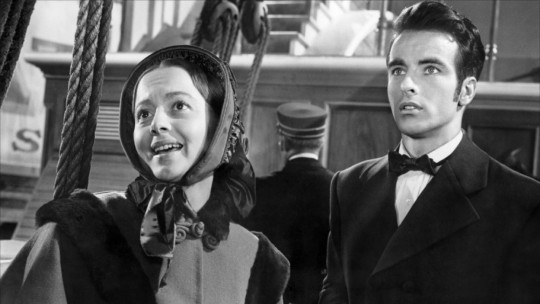
Olivia de Havilland and Montgomery Clift in The Heiress (William Wyler, 1949)
Cast: Olivia de Havilland, Montgomery Clift, Ralph Richardson, Miriam Hopkins, Vanessa Brown, Betty Linley, Ray Collins, Mona Freeman, Selena Royle, Paul Lees, Harry Antrim, Russ Conway, David Thursby. Screenplay: Ruth Goetz, Augustus Goetz, based on their play suggested by a novella by Henry James. Cinematography: Leo Tover. Production design: Harry Horner. Film editing: William Hornbeck. Music: Aaron Copland.
With 12 Oscar nominations and three wins for directing, William Wyler holds a firm place in the history of American movies. But not without some grumbling on the part of auteur critics like Andrew Sarris, who observed, "Wyler's career is a cipher as far as personal direction is concerned." His movies were invariably polished and professionally made, but if what you're looking for is some hint of personality behind the camera, the kind that Alfred Hitchcock or Howard Hawks or John Ford displayed no matter what the subject matter of the film, then Wyler is an enigma. His most personal film, The Best Years of Our Lives (1946), grew out of his wartime experiences, but they are subsumed in the stories he has to tell and not revealed with any assertively personal point of view on them. And anyone who can trace a Wylerian personality latent in movies as varied as Mrs. Miniver (1942), Roman Holiday (1953), Ben-Hur (1959), and Funny Girl (1968) has a subtler analytical mind than mine. What they have in common is that they are well made, the work of a fine craftsman if not an artist. The other thing they have in common is that they won Oscars for their stars: Greer Garson, Audrey Hepburn, Charlton Heston, and Barbra Streisand, respectively. The Heiress, too, won an Oscar for its star, Olivia de Havilland, suggesting that in Wyler we have a director whose virtue lay not in his personal vision but in his skill at packaging, at arranging a showcase not just for performers -- he also directed Oscar-winning performances by Bette Davis in Jezebel (1938) and by Fredric March and Harold Russell in The Best Years of Our Lives -- but also for production designers, costume designers, composers, and cinematographers: Oscars for The Heiress went to John Meehan, Harry Horner, and Emile Kuri for art direction and set decoration, to Edith Head and Gile Steele for costumes, and to Aaron Copland for the score, and Leo Tover was nominated for his cinematography. Wyler lost the directing Oscar to Joseph L. Mankiewicz for A Letter to Three Wives, but is there any doubt that The Heiress would have been a lesser film than it is without Wyler's guidance? All of this is a long-winded way to say that although I honor, and in many ways prefer, the personal vision that shines through in the works of directors like Hitchcock, Hawks, Ford, et al., there is room in my pantheon for the skilled if impersonal professional. As for The Heiress itself, it's a satisfying film with two great performances (de Havilland's Catherine and Ralph Richardson's Dr. Sloper), one hugely entertaining one (Miriam Hopkins's Lavinia Penniman), and one sad miscasting: Montgomery Clift's Morris Townsend. It's a hard role to put across: Morris has to be plausible enough to persuade not only Catherine but also the somewhat more worldly Lavinia that he is genuinely in love with Catherine and not just her money, but he also needs to give the audience a whiff of the cad. Clift's Morris is too callow, too grinningly eager. There is no ambiguity in the performance. If we like Morris too much, we risk seeing Dr. Sloper more as an over-stern paterfamilias and less as the cruelly self-absorbed man he is. Richardson's fine performance goes a long way to righting this imbalance, but he's fighting Clift's sex appeal all the way.
8 notes
·
View notes
Note
Top 5 popular movies you still haven't seen, top 5 movies with the worst costuming, top five comedies, top five movies other people generally dislike that you enjoy
Top Five Movies I haven't Seen:
Vivacious Lady- though I found it at my library yesterday, so I'm watching it tonight or tomorrow!
Deception- A Bette Davis/Claude Rains melodrama where he's the antagonist?? Yes, please!!
Pearl- After watching X a couple weeks ago, I definitely need to see Pearl! I had heard of it, of course, and was originally going to just watch that, since I heard good things...but X was available for free, briefly, and then I discovered that Pearl is a prequel! And it looks like such a cool horror flick.
Lawrence of Arabia- It's been on my list for a long time...but it's so damn long, that it's tough to find the time to watch it!
Deathtrap- It looks like such a fun mystery thriller! And it would be nice to see Christopher Reeve playing someone other than Superman.
Top Five Movies with the Worst Costuming
Little Women (2019)- I mean, I've written about my loathing for this movie and its costumes so many times, it's no surprise that this is number one.
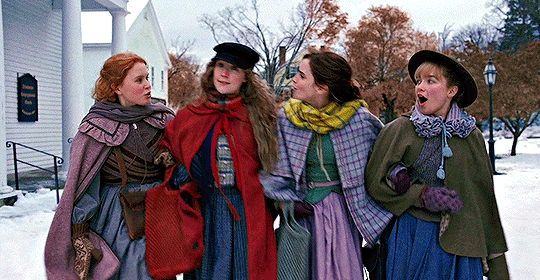
Beauty and the Beast (2017)- Honestly, this isn't a critique of the entire film's costumes...just the two ball gowns, which clash so much with the rest of the fantasy 18th century clothing, and it makes me sad.


Phantom of the Opera (2004)- Another one where the costumes aren't atrocious...but you can tell that they just didn't have much of a budget. So when you compare them to the stage production, everything pales in comparison...especially because the lighting/cinematography is so bright and washed out that you can see everything. The costumes might have looked better if there were more shadows or darkness.

I honestly cannot think of two more movies where the costumes annoy me, so I'm going to make the last two TV Shows!
Reign- I have never seen this show...but...I'm gonna go out on a limb and say that that is not how they dressed in the 16th century.
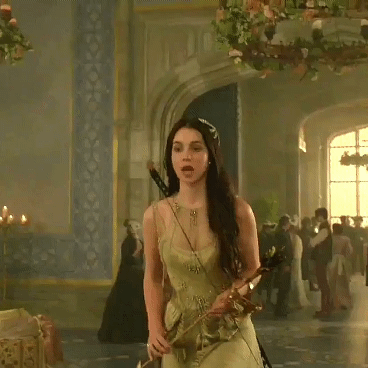
When Calls the Heart- this show is supposed to be set in the early 1900s.
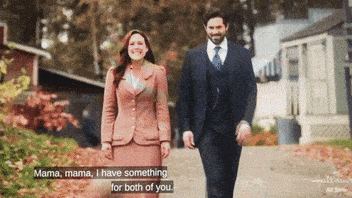
Top Five Comedies:
The Philadelphia Story
How to Steal a Million
Clue
Drop Dead Gorgeous
The Princess Bride
Top Five Movies you enjoy that other people Generally Dislike
Phantom of the Opera (1943)- I feel like if you're a Phantom purist, you probably don't like this movie, as it changes too much from the book...and I've seen a lot of general "meh" reviews on the movie...I DON'T CARE, I LOVE IT SO MUCH

Drop Dead Gorgeous- Now, I don't think people dislike this movie, in general, but I can totally understand if people don't like it...this one is interesting, because I feel like if you grew up at a very particular time, you love this movie. But I feel like most people who watch it for the first time nowadays don't love it, because there are moments that...have not...aged well. The "r" word gets thrown around a lot...there's one side story where a white girl keeps referring to herself as Asian-American...I can see why it's not for everyone. But as a MN girl who was a teenager when this movie came out, there's no way I cannot love it.

Seven Brides for Seven Brothers- Another movie that maybe hasn't aged that great...I feel like this one has a lot more "general dislike", and I totally get why...I just like it for the fun musical numbers and tone, while totally agreeing that on first viewing, there are definitely some issues...I mean, it's about a bunch of brothers that kidnap the girls they have crushes on. I mean, if you examine it, you can talk about how the character of Millie generally takes no shit from her brothers-in-law, and teaches them how to be decent people...but I mostly watch it for the choreography, lol.

Little Women (1949)- I wouldn't say this one is generally disliked; it's just usually put down lower on the list of LW adaptations. People who love the 1933 version call this one a tired retread, people who like the newer adaptations think this one is boring. But there is something about this one that I just love...and it is probably my personal favorite (while admitting that the 1994 film is the best film overall)

Tuck Everlasting- I don't think this film is necessarily hated, but I know it's very different from the book and it changes a lot/leaves stuff out, etc. And I think most people give it an "it's ok, I guess" review, and then promptly forget about it. But I saw this movie before I knew the specifics of the book, and I really enjoyed it. I still watch it every once and a while, and it gives me a bit of nostalgia...and I do think it's a very pretty movie...really nice cinematography and set/costume design.

*This last one was tough, cause I don't have that many "unpopular opinions" when it comes to movies...at least for films that I like (obviously really disliking LW '19 is an unpopular opinion)...so some of my choices were sort of "middle of the road".
#asks#little women#the philadelphia story#how to steal a million#phantom of the opera#beauty and the beast#drop dead gorgeous
6 notes
·
View notes
Photo

老Yang教员组今天为大家整理一篇优秀的paper代写范文-Washington Square,供大家参考学习,这篇论文讨论了《华盛顿广场》。《华盛顿广场》讲述了一个理性而务实的爱情故事,现实与庸俗中仍掺杂着淡淡的忧伤与心碎,构思巧妙,细节准确,文学性强。
同时有需要essay润色查重、辅导代写、托福GRE考试保分、网课全方位包课的家人们可以联系老Yang微信(Wechat ID: ymf2531)进行咨询喔~
The drama tells the story of a rational and practical love; reality and vulgarity are still mixed with light sadness and heartbreaking feelings, ingenious conception, accurate details and strong literariness. The film won four awards at the 22nd Academy Awards (1949) for Best Actress, Best Art Instruction - Setting, Best Costume Design, Best Drama and Comedy Music. The film was adapted from Henry James' novel Washington Square, which was made into Washington Square in 1997.
In the drama I think the role that gives me an impression is the leading man, Montgomery C lift, who was called Maurice Townsend in the dra ma. The drama mainly tells Catherine Slope, whose parents were very rich, was a kind, shy, ordinary girl who was engaged to ambitious Maurice Townsend. Catherine's father had seen through Maurice’s trick to dissuade her just for her daughter's money, but Catherine planned to elope with him for Maurice’s sake. After Maurice learned that elopement would make Catherine a mere penniless, she abandoned her. Before long, his father died of lung disease, and Catherine inherited all his property.
Over the next 7 years, Catherine learned about human nature and understood all kinds of thoughts of men. Morris, who returned from California, attempted to revive the past, and he set forth with great dignity his abandonment of her: he did it in order not to let her sacrifice her legacy. Listening to Maurice’s rhetoric and lies, Catherine's heart was full of contradictions: her dreams had been shattered, and she was humiliated again, and now self-esteem was stronger than love. But when Maurice persuaded Catherine to run away with him again, she agreed. In the evening, Maurice came to Catherine's residence, but found that the door was closed. The realization of revenge reduced Catherine's heart to calm. She took the lamp up the stairs.
In the drama, from my perspective, Maurice Townsend did a good job, because he acted very well. Drama is a comprehensive art in which actors tell stories through body language, dance movements, music, props, make-up, etc. It integrates music, dance, literature, speech and other artistic forms into one. When watching a play, the actor's costumes, props, looks, tone of speech and gestures are the elements of the story. In drama performance, the core of shaping characters is to mold the characters of characters. It requires actors to abandon their limitations and restrict their daily language to artistic necessity. This requires breaking through the stereotype of role-playing, sorting out the relationship between the characters in the performance, and the relationship behind the relationship. The presentation of this relationship network is in the role and stage, lighting, music competition, publicizing the cooperation and coordination of personality embodies the harmony between the collective and the individual in the drama performance, which is the understanding of the role of the characters.
In a play, if the characters are portrayed distinctly and profoundly, the characters' images will be magnificent; on the contrary, the characters images will be weak and weak. In the heiress, Maurice Townsend should first let go of self-incarnation in their roles in order to correctly grasp the character characteristics of the characters, that is, the internalization of the characters. This is only to shape the characters of the "shape", and the role of the "image" of the grasp, just asked the actor to enter the role of the interior. Actors can develop their body potential and make their body behavior alienated. They should be free and natural. The personalized creation of the characters by the dramatists is the concrete manifestation of their performing skills, artistic quality and accomplishment. Personalized creation requires actors to have strong language, physical adaptability and other factors, which are to test the accuracy of the performers to grasp the characters inside and outside, but also reflects the director, performance insight into society, the ability to analyze social groups and accurately reflect the creativity of these roles.
In performing arts, the roles of little characters are few and the plots are simple. In China's drama and other performing arts, there are many works that depict the small people in detail, because the small and ordinary, real and interesting "small people" role has won a good reputation and income. In the performance, the lines, actions and other relatively are simple, easy to get audience recognition, and actively promote the interaction between the plot and theme expression. And because of their special status and social status, the small people in the performing arts can often set up a lot of unique thinking and action patterns of the characters, and this kind of external form of special language expression, so that the expression, attitude changes caused by the reflection, is the drama performance of the individual. The shaping ability of character is reflected. This belongs to the deep-seated grasp of character shaping, besides, it also requires the artistic ability of speaking speed, attitude transformation, behavior posture and so on. When dealing with role characteristics, we should avoid formalizing, formulaic, conceptualizing and simplification. The portrayal of characters should be reasonable and consistent with the development of the whole plot. It should be different from the age, professional status, social stratum, character relationship, ideal and belief, interests and hobbies, life habits of the characters. For example, Maurice Townsend not only acts bad guy, but also acts good man. These are the characters, describe the external appearance and behavior of the characters, character analysis, psychological monologue shows, it is the character of the role.
老Yang留学教育原创版权郑重声明:原创优秀范文源自编辑创作,未经官方许可,网站谢绝转载。对于侵权行为,未经同意的情况下,老Yang有权追究法律责任。我们主要业务有essay代写、assignment代写、paper代写、作业代写、论文代写、雅思考试、托福考试、GRE考试、网课包课等。
老 Yang 为留学生提供靠谱隐私的留学学业服务,亲们可以进入主页了解和获取更多优秀范文,有需要可以咨询老Yang微信(WeChat ID: ymf2531)。
0 notes
Text
“My darling love, I woke up this morning trying to concentrate all my strength to get through this day that normally should bring me nothing from you. You can easily imagine my surprise, my joy, my gratitude, my explosion of life and love, when suddenly I heard the doorbell ringing and when I was handed your letter. It took me a long time to unseal it. It was so good. But my happiness was not great enough; nothing can compare to what I felt when I read you. Only one thing made me sad. It was Catherine's accident. What happened to her? What can glasses do in that case? Is it very pronounced or are you exaggerating a little? When did it happen to her? Is she herself worried about it? Are you very scared?
The tone of your letter reassured me about all my worries, which were not the least, about your health: but I believe that everything is going as I had hoped; Paris has softened a bit the evil of the tropics; Avignon and finally the the mountains will do the rest. At last! Eat, sleep, breathe, love and think that here I am waiting for you as calmly as I can - I need strength and patience! - but happy, happy as I have never been happy before, sure of you, of me, of us, and ready to brave death even if it comes, to welcome you soon, with the clearest look you have ever seen in your life.
Yet, it cannot be said that everything conspires to help me; you remain, in absence itself, my only companion - fever and rest. My father is suffering a little at the moment from an uncertain time and a melancholic state of mind (the word is far from being right, but it is the one he used). When I stay at home and Pitou comes to have his meals at our house, I spend my time tying my nerves, which only have those moments to relax. And when I get out it's to go and try on my Orpheus costumes - a great test! - or to go shooting in the middle of Paris, surrounded by people who are and will be decidedly foreign to me in everything and for everything, surrounded by an unrestrained, enraged crowd, who shout, gesticulate, laugh, protest or criticize every one of our movements; they only become human, benevolent, charitable when they come close to us and then the signature-autographs that we have to make on a chain, prevent us from looking at them. It is a real torture.
I'm on my second day of work and I'm just making a miserable wish: to get back to the studio as soon as possible. As for the details, I've written them down in my diary as I go along. I'll have them read to you, if you like. Tomorrow I'm resting, and if the weather continues to be good, I have a five-day vacation; then - or before that, if it rains - we start shooting at the Francœur Studios, leaving the rest of the exteriors for a little later. Since your departure, outside of work, no important events have taken place.
I think you know about the death of Madeleine's mother. I don't remember if it happened before or during your stay in America. In any case, I hear that since then Madeleine has had a sick neck nerve, which gives her terrible headaches. Papa claims that she scratched herself and poisoned herself; but he doesn't know her. I've seen her live and I can't help but be touched by it; that's why I'd like you to send her a nice little note when you get back.
Work has been going well and the proposals are raining; but it's strange, it doesn't make me hot or cold. The idea of playing Judith, which transported me a little last year, leaves me indifferent today. As for The Princess Death ... let's not talk about it. Only Dora succeeds - and succeeds well! - to hold my attention, to keep me busy and preoccupied, and it is not only because you are the author. I also feel tired, and I think that my disinterestedness is mainly due to this fact. Your letter has swept everything away and tonight I feel alive again. Now I have to sleep. Tomorrow I'll get up ready for anything. Oh my love, if you only knew how good it is to carry you! I love you, I love you."
- Maria Casarès to Albert Camus, Correspondance, September 11, 1949 [#90]
#albert camus#camus#absurd#absurdism#maria casares#correspondance#love letters#love#strength#life#joy#mountains#happy#patience#suffering#death
20 notes
·
View notes
Text
Blood on the Moon

“The beauty of that man. He’s so still. He’s moving. And yet he’s not moving.” –Lee Marvin on Robert Mitchum
All cloudy skies and discouraging words, the range in Robert Wise’s Blood on the Moon (1949) is a place where no one can feel safely at home. The film opens on a dismal panorama of rain pounding a formless landscape, blotting out the horizon. Robert Mitchum comes riding alone, head down, rain dripping off his hat, stopping to gaze dejectedly over a dark valley.
If any one actor embodies the very notion of the “noir western,” it is Mitchum. Before he distilled the noir ethos with his world-weary pessimism and cool insolence, Mitchum started his career as a heavy in the amiable, low-budget Hopalong Cassidy series, earning “$100 a week and all the horse manure I could carry home,” he later recalled. After seven films with Cassidy—parts he described as “a lot of beard, very little dialogue”—Mitchum signed a contract with RKO, and the studio tried him out as a clean-cut cowboy hero in two Zane Gray westerns, Nevada (1944)and West of the Pecos (1945). He was wasted on these cardboard good guys and boy’s-adventure stories, which had no use for his undercurrents of melancholy, disaffection and skepticism. The first film to fully express his persona as the eternal outsider was Raoul Walsh’s seminal noir western, Pursued (1947), which cast him as a displaced foundling followed through life by the black cloud of his mysterious past.
As befitting a man who arrived in California aboard a freight train, and who never stopped identifying himself as a hobo, Mitchum was the movies’ quintessential drifter. He played all kinds of itinerants: exiles escaping criminal pasts, globe-trotting marines, roaming preachers, nomadic sheepherders, travelers on the rodeo circuit. He had hit the road at 15, driven not by an unhappy home or dire poverty but simply by the restless urge to wander, to taste the sweet anguish of loneliness far from hearth and home. In his memoir, Them Ornery Mitchum Boys, John Mitchum wrote that he initially saw his older brother Bob’s penchant for “running off” as a weakness of character, but came to admire the way he “simply released himself from emotional bondage.” Mitchum himself said that he had “been in a constant motion of escape my entire life.”
In Blood on the Moon he plays Jim Garry, a man with nothing: no home, no family, no job. In the opening scene his few possessions are destroyed by stampeding cattle as he sits miserably drying his wet, mud-caked boots by a small fire. This is the truth of the cowboy life. (When co-star Walter Brennan saw Mitchum in his elegantly rugged costume, he declared, “That is the goddamndest realest cowboy I’ve ever seen!”) Down on his luck after watching his own herd die of fever, Garry has been summoned by an old trail-herding partner to be cut in on a big deal. He doesn’t know that he’s being hired for his gun, or that the friend who sent for him is scheming to steal another man’s herd through a back-handed deal with a crooked government agent for the local Indian reservation. Walking into this charged situation as a stranger, he’s immediately greeted with hostile suspicion by both sides in a range war, and he counters evasively, refusing to take sides or reveal his true nature. Keeping to himself a lifetime of bad breaks and worse choices, Jim Garry gives the film a sad, uncertain, jaded heart. Mitchum never once smiles; the closest he comes is when Jim says that a murderous brawl with his erstwhile friend was “a pleasure.”
That friend is Tate Riling (Robert Preston), a shameless, smirking con man who lies to local farmers to get them on his side and seduces his enemy’s daughter into betraying her own father. Garry gets the picture but goes along without enthusiasm; he doesn’t like being a mercenary, and is acutely aware of the contempt he now inspires in decent people, but accepts it quietly. He is what Mitchum called himself in real life, “a patient cynic.” Watching on the sidelines, he’s riveting in his immobility. When he moves, it’s with weighted, lazy power. In one scene he confronts a gunfighter and walks toward him across the wide Main Street. All he has to do is walk, with his inimitable panther tread, and the other guy knows he’s outclassed and slinks away.
Jim is drawn to the feisty, outspoken daughter of the man Riling is trying to swindle (Barbara Bel Geddes—she and Mitchum meet cute by emptying their rifles at each other), but he’s motivated even more by growing disgust at Riling. “I’ve seen dogs wouldn’t claim you for a son,” he declares, setting off a savage brawl in which Mitchum and Preston hurl punches, chairs and bottles at each either as they wrestle, lurch and crash around an empty barroom in near-total darkness. The darkness and slashing gleams of light come courtesy of DP Nicholas Musuraca, who pioneered noir cinematography in Stranger on the Third Floor (1940) and diversified it in Out of the Past. Here he brings his mastery of shadows to the range, flooding much of the movie in an enveloping gloom that obscures actions and identities. For contrast, there is a gorgeous sequence of pursuit through a snowbound pass, with paths slicing through white drifts and across glittering plains. There is a shootout in a dense pine forest at night, with figures moving almost invisibly through the faintly glimmering boughs.
With its dirty deals, government corruption, romantic betrayal, mean thugs, gloomy bars, and its broke, lonely hero pondering whether or not to throw away his honor, Blood on the Moon’s story could be translated to any grimy, gang-ridden city. The film grows more conventional as it goes along, but the genre staples are well-handled, and there are powerful scenes like the one where Garry goes to tell Walter Brennan’s character that his son has been killed, and must endure the old man’s stricken, dry-eyed accusation. Mitchum’s reserve, detachment and neutrality are so attractive that it’s easy to ignore how they can turn into a wholesale abdication of moral responsibility. Under noir’s probing skepticism, the western hero’s stoic reticence becomes unhealthy passivity, his righteous determination becomes obsessive vindictiveness. The west’s promises of unbounded freedom and opportunity dwindle and close, the way once open grazing lands become bitter battle-grounds. Almost unseen in the film, yet key to its central crime, are the Indians confined to their reservation, while white men fight amongst themselves over the money to be made by feeding captive mouths. This land’s economy is dirtier than the muck of its cow-trampled pastures.
by Imogen Sara Smith
#Imogen Sara Smith#The Chiseler#Blood on the Moon#Robert Mitchum#Buster Keaton#In Lonely Places#Criterion
7 notes
·
View notes
Text
LIZ HAS THE FLIMJABS
December 30, 1950

“Liz Has the Flimjabs” (aka “A Severe Case of Flimjabs”) is episode #112 of the radio series MY FAVORITE HUSBAND broadcast on December 30, 1950.
This was the 14th episode of the third season of MY FAVORITE HUSBAND. There were 31 new episodes, with the season ending on March 31, 1951.
Synopsis ~ Liz wants a mink coat from George, so she pretends to be sick in order to get his sympathy - and the coat! George is on to her tactics, and decides to give her the scare of her life - literally!
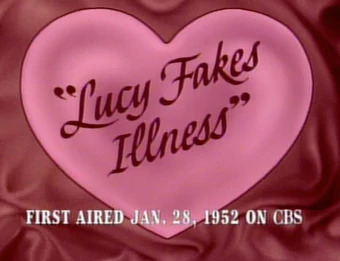
Note: This program served as the basis for the “I Love Lucy” episode “Lucy Fakes Illness” (ILL S1;E16) filmed on December 18, 1951 and first aired on January 28, 1952. The role of the Doctor was taken by Hal March, who was actually playing an actor friend of Ricky’s named Hal March pretending to be a doctor. On television, Lucy also adopts a psychological illness in addition to her physical ailments. There was no mention of Christmas or New Years on the television show.

“My Favorite Husband” was based on the novels Mr. and Mrs. Cugat, the Record of a Happy Marriage (1940) and Outside Eden (1945) by Isabel Scott Rorick, which had previously been adapted into the film Are Husbands Necessary? (1942). “My Favorite Husband” was first broadcast as a one-time special on July 5, 1948. Lucille Ball and Lee Bowman played the characters of Liz and George Cugat, and a positive response to this broadcast convinced CBS to launch “My Favorite Husband” as a series. Bowman was not available Richard Denning was cast as George. On January 7, 1949, confusion with bandleader Xavier Cugat prompted a name change to Cooper. On this same episode Jell-O became its sponsor. A total of 124 episodes of the program aired from July 23, 1948 through March 31, 1951. After about ten episodes had been written, writers Fox and Davenport departed and three new writers took over – Bob Carroll, Jr., Madelyn Pugh, and head writer/producer Jess Oppenheimer. In March 1949 Gale Gordon took over the existing role of George’s boss, Rudolph Atterbury, and Bea Benaderet was added as his wife, Iris. CBS brought “My Favorite Husband” to television in 1953, starring Joan Caulfield and Barry Nelson as Liz and George Cooper. The television version ran two-and-a-half seasons, from September 1953 through December 1955, running concurrently with “I Love Lucy.” It was produced live at CBS Television City for most of its run, until switching to film for a truncated third season filmed (ironically) at Desilu and recasting Liz Cooper with Vanessa Brown.
MAIN CAST

Lucille Ball (Liz Cooper) was born on August 6, 1911 in Jamestown, New York. She began her screen career in 1933 and was known in Hollywood as ‘Queen of the B’s’ due to her many appearances in ‘B’ movies. With Richard Denning, she starred in a radio program titled “My Favorite Husband” which eventually led to the creation of “I Love Lucy,” a television situation comedy in which she co-starred with her real-life husband, Latin bandleader Desi Arnaz. The program was phenomenally successful, allowing the couple to purchase what was once RKO Studios, re-naming it Desilu. When the show ended in 1960 (in an hour-long format known as “The Lucy-Desi Comedy Hour”) so did Lucy and Desi’s marriage. In 1962, hoping to keep Desilu financially solvent, Lucy returned to the sitcom format with “The Lucy Show,” which lasted six seasons. She followed that with a similar sitcom “Here’s Lucy” co-starring with her real-life children, Lucie and Desi Jr., as well as Gale Gordon, who had joined the cast of “The Lucy Show” during season two. Before her death in 1989, Lucy made one more attempt at a sitcom with “Life With Lucy,” also with Gordon.
Richard Denning (George Cooper) was born Louis Albert Heindrich Denninger Jr., in Poughkeepsie, New York. When he was 18 months old, his family moved to Los Angeles. Plans called for him to take over his father’s garment manufacturing business, but he developed an interest in acting. Denning enlisted in the US Navy during World War II. He is best known for his roles in various science fiction and horror films of the 1950s. Although he teamed with Lucille Ball on radio in “My Favorite Husband,” the two never acted together on screen. While “I Love Lucy” was on the air, he was seen on another CBS TV series, “Mr. & Mrs. North.” From 1968 to 1980 he played the Governor on “Hawaii 5-0″, his final role. He died in 1998 at age 84.
Bea Benadaret (Iris Atterbury) was considered the front-runner to be cast as Ethel Mertz but when “I Love Lucy” was ready to start production she was already playing a similar role on TV’s “The George Burns and Gracie Allen Show” so Vivian Vance was cast instead. On “I Love Lucy” she was cast as Lucy Ricardo’s spinster neighbor, Miss Lewis, in “Lucy Plays Cupid” (ILL S1;E15) in early 1952. Later, she was a success in her own show, “Petticoat Junction” as Shady Rest Hotel proprietress Kate Bradley. She starred in the series until her death in 1968.
Ruth Perrott (Katie, the Maid) was also later seen on “I Love Lucy.” She first played Mrs. Pomerantz, a member of the surprise investigating committee for the Society Matrons League in “Pioneer Women” (ILL S1;E25), as one of the member of the Wednesday Afternoon Fine Arts League in “Lucy and Ethel Buy the Same Dress” (ILL S3;E3), and also played a nurse when “Lucy Goes to the Hospital” (ILL S2;E16). She died in 1996 at the age of 96.
Bob LeMond (Announcer) also served as the announcer for the pilot episode of “I Love Lucy”. When the long-lost pilot was finally discovered in 1990, a few moments of the opening narration were damaged and lost, so LeMond – fifty years later – recreated the narration for the CBS special and subsequent DVD release.
Gale Gordon (Rudolph Atterbury) does not appear in this episode.
GUEST CAST

Frank Nelson (Dr. Stevenson) was born on May 6, 1911 (three months before Lucille Ball) in Colorado Springs, Colorado. He started working as a radio announcer at the age of 15. He later appeared on such popular radio shows as “The Great Gildersleeve,” “Burns and Allen,” and “Fibber McGee & Molly”. Aside from Lucille Ball, Nelson is perhaps most associated with Jack Benny and was a fifteen-year regular on his radio and television programs. His trademark was playing clerks and other working stiffs, suddenly turning to Benny with a drawn out “Yeeeeeeeeees?” Nelson appeared in 11 episodes of “I Love Lucy”, including three as quiz master Freddy Fillmore, and two as Ralph Ramsey, plus appearance on “The Lucy-Desi Comedy Hour” - making him the only actor to play two different recurring roles on “I Love Lucy.” Nelson returned to the role of the frazzled Train Conductor for an episode of “The Lucy Show” in 1963. This marks his final appearance on a Lucille Ball sitcom.
The doctor’s surname may be a reference to noted costume designer Edward Stevenson, who designed gowns for Lucille Ball in more than a dozen RKO films and would eventually become costume designer of “I Love Lucy” after the departure of Elois Jenssen in 1955.
EPISODE
ANNOUNCER: “And now, let’s look in on the Coopers. It’s evening, and Liz and George are sitting in the living room admiring their Christmas tree."

George wonders if it is time to take the Christmas tree down but Liz doesn’t want to. They agree to put away their presents instead and start to talk about the gifts they didn’t give or get.
Liz nearly bought George a set of matching golf clubs. George says he nearly bought her a mink jacket. He says he saw it in the window at Millers, but realized he couldn’t afford it. Liz sadly reminds him that she has never had a fur coat and wonders if they could afford it if they all their Christmas gifts to the store. George says it still wouldn’t be enough, but Liz wants to wear something special to the Atterbury’s New Year’s Eve party.
Next morning, in the kitchen, Katie the Maid asks Liz why she is so sad. Liz tells her about her mink jacket dreams. Liz solicits Katie’s opinion on how she can’t best get George to get her a mink jacket in time for the party. Liz decides to play sick since George always gets her what she wants when she’s ill.
After dinner, Liz and George contemplate what to do. Liz suggests going to the movies to see Harvey starring Jimmy Stewart, which is playing at the Strand.

Harvey is a comedy about a man whose best friend is a six-foot tall imaginary rabbit. It premiered just ten days earlier before this broadcast and starred James Stewart. The film won an Oscar for Josephine Hull. The screenplay was based on the 1944 Broadway play of the same name by Mary Chase which won the 1945 Pulitzer Prize for Drama.
Before Liz can tell George the second feature, she starts to writhe in pain! Amid moans and groans, Liz details the pain for George. She says she used to have these attacks as a child. When she says the only thing that sometimes helps is little gifts to make her happy, George gets suspicious. He quickly leaves the room to make a phone call, which Liz thinks is to buy her a mink jacket, but he has actually called the doctor!
End of Part One

Bob LeMond presents a live Jell-O commercial, giving a basic recipe for preparation of all delicious six flavors!
ANNOUNCER: “As we look in on the Coopers once again, Liz is pretending to be sick and George, who is worried about her, has called the doctor.”
The doorbell rings and George admits Dr. Stevenson (Frank Nelson). Before seeing Liz, George tips him off that Liz may have a rare disease and that the only cure is a mink coat! George asks him to give her a good scare and the Doctor agrees to play along.

Entering the bedroom, Liz immediately tells the Doctor she feels much better. But after a quick exam, the Doctor diagnoses Liz with a rare tropical disease from the West Indies called the ‘Flimjabs’. The only cure is to operate and remove her ‘torkle’ but warns her that she will never be able to ‘yammle’ again. The Doctor explains that ‘yammling’ is an involuntary peristalsis of the transverse clavis.
GEORGE: “Doctor, do you have to remove the whole torkle?”
DOCTOR: “Maybe we’ll be lucky and can save half of it. After all, half a torkle is better than none.”
LIZ: “Well, I should say so! I’d hate to think of never yammeling again!”
The Doctor says that they must now wait 24 hours and see if she turns green.
DOCTOR: “If you turn green, three hours later (snaps his fingers) gone.”
LIZ: (snaps) “Gone?”
DOCTOR: (snaps) “Gone.”

For the television script, the ‘Flimjabs’ was renamed the 'Gobloots’ - a rare tropical disease that carried into America on the hind legs of the 'boo-shoo bird.’ It can necessitate a person having to undergo a 'zorchectomy’ – total or partial removal of the 'zorch’. Even if doctors are able to save half a person’s 'zorch,’ the patient will never be able to 'trummle’ again. 'Trummling’ is a mysterious involuntary internal process. Finally, if you turn green while suffering from the 'gobloots’ you will be dead in 30 minutes!
Iris Atterbury drops by to see Liz on her way to the Bridge Club meeting. Liz tells her that she has been diagnosed with the Flimjabs.
IRIS: “Oh, how exciting! This will make Betty Ricky’s gallstones look sick! She’ll be absolutely green.”
LIZ: “She's not the only one. That’s one of the danger signs. I may turn green.”
IRIS: “With a green face and red hair, you’ll be out of this world.”
LIZ: “Yes, that’s what I’m afraid of.”
Iris is overcome with emotion at the thought of losing Liz. She doesn’t want to leave, but the ice cream for the Bridge Club meeting is in the car and it’s melting!
That night, Doctor Stevenson returns to check on Liz. Answering the door, George confesses that he’s put a green light bulb in Liz’s bedroom light. As soon as George turns on the lights, Liz shrieks seeing her green hands! Her face and hair have turned green, too! Liz thinks the men have Flimjabs too, because they are also green, but then the truth sets in.

LIZ: “Oh, no! This is the end! I’m looking at the world through green colored eyeballs!”
Liz dramatically declares that she’s dying. George accuses her of being over-dramatic.
LIZ: “I’m sorry, George. But I don’t die every day and it’s new to me.”
Before her imminent demise, Liz confesses to all the car accidents she’s had and hidden by having the car fixed without telling him.
LIZ: “In fact, the only thing left of the original car you bought is the ashtray in the back seat!”
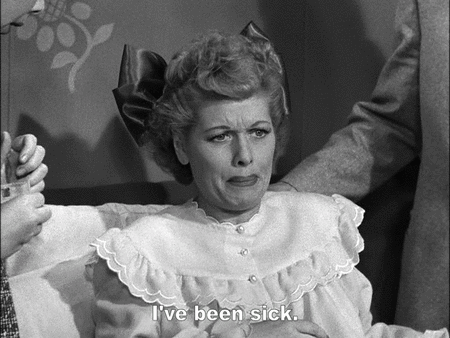
Then Liz bravely confesses to pretending to be sick to get him to buy her a mink coat. George also needs to make a confession: it was all a trick. There is no such thing as ‘Flimjabs’ and the light is from a green light bulb!
The phone rings and it is Iris, tearfully calling from the Bridge Club meeting. The girls have just had a memorial ceremony for Liz by turning her chair to the wall and smashing her teacup in the fireplace. Before Liz can tell Iris that it was a joke, she learns that they all chipped in and bought her a goodbye present: a mink coat! Liz hangs up in tears. George is confused.
GEORGE: “Isn’t that what you wanted?”
LIZ: “Yeah, but I have to die to get it!”
END OF EPISODE
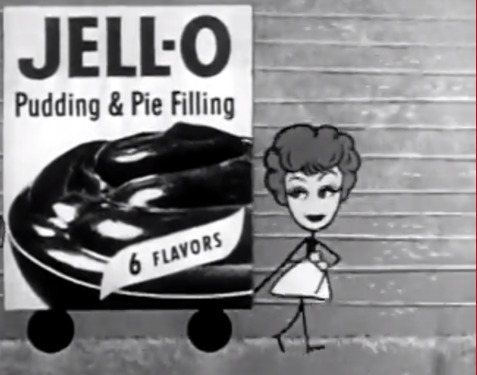
In the live Jell-O commercial, Lucille Ball and Bob LeMond play a couple of nomads lost in the desert. Lucy uses her ‘Isabella Clump’ voice as ‘Smith’. Bob is looking for his camp, near a big dune.
LUCY / ‘SMITH’: “A dune? What’s a dune?”
BOB: “What’s a dune????”
LUCY / ‘SMITH’: “I dunno. What’s a-dune with you?”
Smith sees a mirage - a big bowl of Jell-O! After describing the six delicious flavors, Bob suggests they go home.
BOB: “Go home? We’re lost in the desert!”
LUCY / ‘SMITH’: “Why don’t we each take one of those cars.”
BOB: “What cars?”
LUCY / ‘SMITH’: “The ones over there. That’s a two-car mirage!”


The same date this episode was broadcast, columnist Sid Shalit in the New York Daily News reported that a television situation comedy was being prepared starring Lucille Ball and Desi Arnaz in the mold of “My Favorite Husband”. Clearly, the radio series was winding down. This was the final episode of 1950 with only 16 episodes left.

Meanwhile, in addition to radio and television, Ball was on the nation’s movie screens in two 1950 films: The Fuller Brush Girl and Fancy Pants.
#My Favorite Husband#Liz has the Flimjabs#I Love Lucy#Lucy Fakes Illness#Lucille Ball#Richard Denning#Bea Benadaret#Ruth Perrott#Bob Lemond#Radio#CBS#Jello#1950#Harvey#Jimmy Stewart#Frank Nelson#Fuller Brush Girl#Fancy Pants
11 notes
·
View notes
Photo


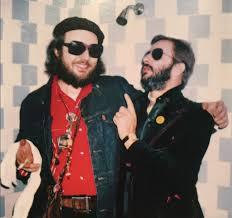


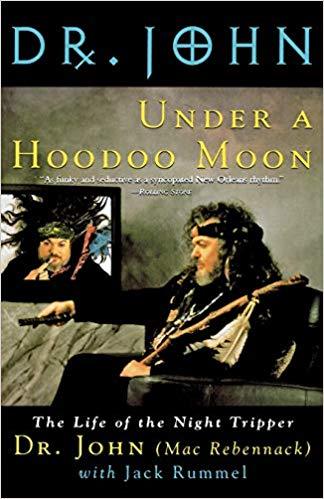



Dr. John (1941-2019)
Leon Redbone (1949-2019)
It’s very sad to hear of the passing of two great musician’s in the past few days; Dr. John and Leon Redbone. Both were a bit unusual in that they found popularity with Rock music audiences while playing music that was not necessarily rooted in Rock ‘n’ Roll.
Dr. John was always one of my favorites. Born and raised in New Orleans and influenced by the sounds of that great music city, he released his first album Gris-Gris in 1968, creating a unique sound by blending Pyschedelic Rock with New Orleans Rhythm and Blues. Adding a New Orleans Voodoo theme to his shows, his persona as The Night-Tripper was a perfect addition to the Rock and Pyschedelic culture of the late 60’s and early 70’s. He later dug deeper into his New Orleans roots and kept much of the traditional New Orleans songs alive on his albums and in his shows. As someone who has made several trips to the Crescent City, I particularly loved Dr. John’s album Going Back to New Orleans. It is a collection of cover songs from many of the great New Orleans musical artists. He was also a fine piano player. His style was influenced by the great Professor Longhair and the Doctor did the Professor proud with his talent and interpretation on the piano keys. Dr. John wrote about Professor Longhair and his other musical influences in his autobiography Under a Hoodoo Moon. It is an excellent book and written in a very open and honest style. I was fortunate to see Dr. John twice, both in Chicago. The first time was in November, 1995 at Cubby Bear Lounge. On that night, he played mostly traditional New Orleans music. He and his band were dressed in traditional Mardi Gras costumes. A year later, in December 1996, I saw him again at House of Blues. At that show, his style and musical selections was that of his Night-Tripper days. That show was opened by another great piano player, the late Leon Russell. Dr. John was a musician that brought a lot of joy to my life and I will miss him greatly.
Leon Redbone was a musician I was only into on a peripheral level, but I always enjoyed his music when I heard it. His sound was rooted in Blues and Jazz, and he particularly focused on Tin Pan Alley classics from the late 19th and early 20th centuries. In the 1970’s, he became popular in with young Rock fans after he met Bob Dylan at a Folk festival. Recognizable by his ever-present Panama hat, he was a favorite guest of some of the late-night talk show hosts in the 70’s and 80’s. While in college in the late 70’s, my friend and next-door neighbor Seed frequently played Leon Redbone’s music on his reel-to-reel. I can clearly remember listening to Diddy Wa Diddie during the late sweltering summer nights of southern Illinois.
#dr. john#dr. john and the night-trippers#new orleans#music#piano#professor longhair#leon russell#leon redbone
15 notes
·
View notes
Photo

The Loss of a Loved One by Molly Dickler
March 28—April 3, 2021
Galef 218
Otis College of Art and Design is thrilled to announce Molly Dickler’s solo exhibition, The Loss of a Loved One, consisting of seven photographs and one video featuring her as the model in which she is remembering and re-enacting loss and pain in her life. A sculpture and the title piece, a video about her father, round out the show.
Dickler’s interests span visual art, performance art, and fashion. Dickler attended California College of the Arts where she studied fashion, then switched to photography, which she has continued studying at Otis College of Art and Design, in Los Angeles, CA.
Dickler explains her unusual style as partly circumstantial. “Being a photographer, I have dealt with models cancelling at the last minute. That was until one of my mentors from Otis, Alex Slade, gave me the idea of producing self-portraits. Right away, I decided to take photos wearing my late grandmother's clothes. The series was called Housewife and I began to think of my grandma’s behavior, pose, and things she would do in order to imitate her in this work. While performing and shooting Housewife, I began to feel sad. The more I took photos of myself in her clothes telling her story, the more I realized that I wanted to tell my own story.
I thought a lot about what I wanted for my final project. I knew I was going to use myself as the model in whatever series I did, and I knew I wanted to revisit events that for me were traumatic. One idea was to restage whole scenes. I soon realized that would be impossible, but as I looked through my photo library, I found I had taken lots of photos of these events and then decided I could project them on the wall and then use props and costumes I already had to complete the scenes. The advantage of this approach is that it made the events look like memories of the events instead of documentary photographs of events. It made them look like how I feel about them. I was dragging something from my past to the present; I was dragging time.“
I dedicate my show to my beloved father, Howard Dickler (1949-2021).
Dickler was born and raised in Los Angeles, CA. The Loss of a Loved One will run from March 28-April 3, 2021 at Galef 218, Otis College of Art and Design. Virtual Exhibition walkthrough, Tuesday, March 30, 5:30-6:30 pm, through zoom (ID 979 8993 6898).
Contact:
IG: @mollymax_photography and @mollymax92
0 notes
Text

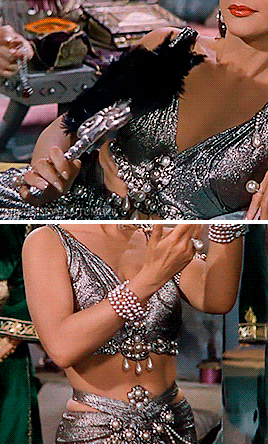



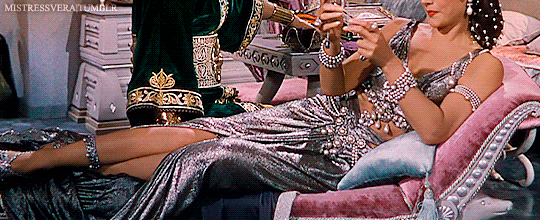


Samson and Delilah (1949) costume appreciation: 2/∞
costume design by Edith Head, Dorothy Jeakins, Elois Jenssen, Gile Steele, Gwen Wakeling
Period dramas | costume appreciation: 8/∞
#samson and delilah#hedy lamarr#costumeedit#costume appreciation#1940s movies#periodedits#perioddramasource#historicwomendaily#period drama costumes#onlyperioddramas#perioddramaedit#sad 1949 costumes#costumesource#gifshistorical#filmtvcentral#filmedit#perioddramacentral#costumegifs#filmgifs#weloveperioddrama#filmtvedit#filmtvdaily#tvfilmgifs#tvfilmedit#costumes#tvfilmsource#tvfilmdaily
256 notes
·
View notes
Text
April 14th, 2020
We have an excellent lineup of livestream programming scheduled until April 24th! These programs were based on the requests and suggestions of our social media followers. Thank you! We’ve so enjoyed providing these programs to you, and we certainly appreciate the reviews, comments, and “Likes” we have received from folks all over the country. Here are a few highlights from our recent livestreams.

Jane Austen’s World with Marie Walker and Glen Kyle
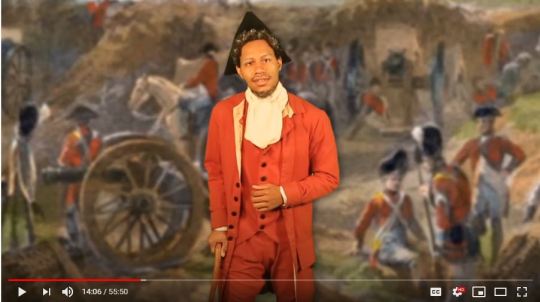
Black Loyalists & Patriots of the American Revolution, Mustpha Slack portraying Austin Dabney

Libba Beaucham reads L. Frank Baum’s The Wonderful Wizard of Oz
You can watch our past livestreams on our YouTube Channel at this link: Past Livestreams
Check out new lineup of programming below!

April 14th at 2 PM EST: The War of 1812
Historian Glen Kyle presents a livestream program on the War of 1812 including causes, outcomes, and soldier life with a special emphasis on the war in the south. Watch via Facebook Live & YouTube Live and ask your questions for Glen in the chat! Great for all ages.
April 15th at 2 PM EST: Early American Medicine
Historian Glen Kyle takes you on medical practices of early America with accurately reproduced medical instruments and tools.
April 16th at 2 PM EST: Queen Victoria
Join Marie Walker and Lesley Jones as they explore the life and times of Queen Victoria during this livestream program.
April 17th at 2 PM EST: George Washington Carver
Meet agricultural scientist, inventor, and environmentalist George Washington Carver, portrayed by Mustapha Slack, during this historic character livestream program. Mustapha Slack and historian Glen Kyle will take your questions from the chat after the performance!
Week Days April 20th-May 1st at 12 PM EST: Classic Tales Storytime with Ms. Libba - Anne of Green Gables
Join Ms. Libba as she reads Anne of Green Gables by L.M. Montgomery weekdays at 12 PM EST on Facebook and YouTube Live.
April 20th 2 PM EST: Ask a Historian!
Join our Executive Director and historian Glen Kyle as he takes your questions about everything history! This is a family-friendly program for all ages, so we encourage your kids at home to join. Teachers, have your students join and ask questions about what they're currently studying!
April 21st at 2 PM EST: The Civil War & Reconstruction
Historian Glen Kyle presents a livestream program on the connections between the end of the American Civil War and Reconstruction.
April 22nd at 2 PM EST: The US Navy in World War 2
Join historian Glen Kyle as he presents a livestream program on the US Navy and naval operations during World War 2.
April 23rd at 2 PM EST: 400 Years of Women's Fashion
Join Marie Walker as she presents a livestream program on the evolution of women's European & American fashion over the last 400 years. Marie will display costumes she has crafted herself!
Watch our Livestream Programs on Facebook Live at Northeast Georgia History Center (NEGAHC) or YouTube Live at https://bit.ly/2wQkqWu

One of the twentieth century’s most prominent figures on Appalachia Studies was born in Jackson County, Georgia, in 1924. Helen M. Lewis throughout her life left an impact academically and socially through her focused work in the Appalachia Mountains. Lewis was a freshman at Bessie Tift College, which has since closed operations and merged with Mercer University, when she discovered her life mission of fighting racial and economic injustices.

Helen Matthews Lewis with her sister Jo Ann (to her right) and parents. Source
Lewis received her bachelors from Georgia State College for Women, now Georgia College and State University, and moved to Atlanta afterwards to help with the registration of young voters across the state before starting graduate school at Duke University. Lewis found work as a speechwriter for Georgia governor Melvin E. Thompson, but she also found troubles with the local authorities. In 1948, she and a group of students hosted a YWCA meeting and were arrested for disorderly conduct because the group had several African-Americans present. All in all, she paid a small fine and was given a lesser charge.
In 1949, Lewis finished graduate school with a master’s degree in sociology from the University of Virginia. The mid-1950s saw her and her husband move again, as they settled in Wise, Virginia. It was here that her world changed when she became fascinated with Appalachian culture. The coal and chemical industries soon became the forces responsible for environmental damage in Appalachian communities. Lewis studied this impact on the people throughout her doctorate studies, which she finished in 1970 at the University of Kentucky. Shortly after, she and her husband divorced and she moved to Tennessee where she continued scholarship and activism for Appalachia.

Helen Lewis in a hardhat and utility suit
Her time at Highlander Research and Education Center, twenty years, allowed for her to research the diverse issues that the Appalachia community faced while developing ways to create change. Social and environmental justice were huge issues, but she also pushed for the empowerment of women and opposition to industries like mining while promoting better social impacts like accessibility to healthcare for coal workers.
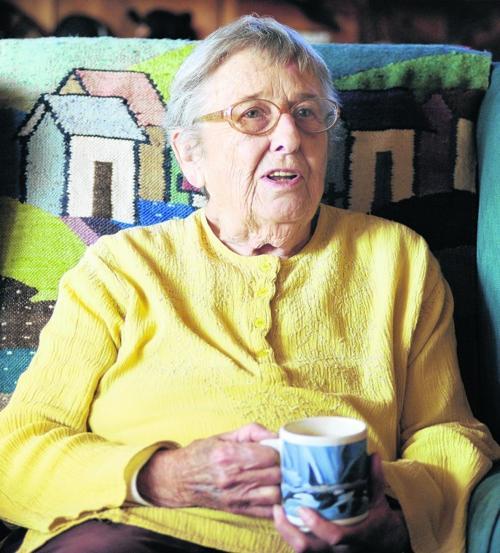
Dr. Helen Lewis in her later years Source
Helen M. Lewis then spent another decade or so in Georgia after retiring from the Highlander Research and Education Center in 1997. Her impact lasts still as Appalachia Studies continues to be a studied geographic and historical topic today. Lewis’ continued pursuit and dedication to creating the field of Appalachia Studies – by pushing for a betterment of its people – is still relevant today as much of this history is interpreted throughout the region in diverse ways.

How did Medieval people affected by the Plague react to this pandemic? Ken and Glen explore how people understood the spread of disease and how they attempted to stop it. Listen at this link!


This week From the Archives is a Kenrick & Co. sad iron from the 1880s. The Archibald Kenrick Company originated in Birmingham, England, in the 1750s, beginning with the production of cast iron pots and utensils. Within the next century, the company created hinges, doorknockers, garden furniture, and sad irons. During WWII, the company manufactured hand grenades and mortar bombs to aid in the war effort!

This iron has a container at the base to put charcoals in to keep it hot. Interestingly, our iron has a brick inside instead of the traditional charcoal! It is in perfect condition, and a beautiful piece of nineteenth-century craftsmanship.

0 notes
Text
Previous Top Ten By Year lists:
1935, 1983, 1965, 1943, 1992, 1978, 1925, 1969
1930
Previous Top Ten By Year: 1949 Posts:
Top Ten By Year: 1949 – Poll Results
100 Images from the Films of 1949
What I’ll Remember About the Films of 1949: A Love Letter
#10. The Queen of Spades (UK/Dickinson)
Diametrically opposed visions of postwar French youth: the dreamers and the delinquents. Two unknown films by two well-known directors (Jacques Becker and Julien Duvivier). I couldn’t choose between the two; they belong together.
————————————————————————————————
Rendezvous in July (Becker) is about twenty-year old kids who can see the Eiffel Tower from their windows. It is a light spring breeze that is on-the-move, because there are places to be and dreams to achieve. We’re first introduced to a family we’ll never see again. This is a pattern that continues through the first fifteen minutes. Our main characters are all introduced alongside their parents, illustrating how markedly different these proto teeny-boppers are from their elders. Collectively, these adults cover all the bases of your standard generational gap; they have practical jobs and adhere to custom, and they mostly disapprove of the instability of artistic endeavor. But these kids are idealistic, and pretty, and talented. They are aspiring actors, playwrights, cinematographers, documentarians, and musicians. They are riding the high of the postwar Americanization boom; they wear pants, love jazz, and smoke American cigarettes (a character offers one to his dad who disdainfully replies with “Keep em”). What makes Rendezvous in July special is its intense possession of the perky energy we’d soon associate with the phenomenon of 50s teeny-bopperdom. I can’t think of an earlier film that depicts youth with the kind of modern immediacy that would become commonplace in the upcoming decades. It must have felt so new watching these characters congregate and flit from place to place, cavorting as a group entity with all the, as the Grinch would say, noise, noise, noise, noise! These kids dance fast to fast music, but Becker speeds up the frame rate all the same.

The centerpiece of the group’s carefree whimsy is the Boat-Car Shark, (because a river can’t stop these kids from getting where they need to). It is one of your rubber bath toys made life-size and fully operational, with Keith Haring-esque hieroglyphs (eyes and octopi that recur on other costumes and decor) and headlights for eyes. It floats across the Seine while passersby look on, noting that “they sure have it easy”. They drive up and out onto the cobblestone, dropping everyone off at their various classes and odd-jobs, a communal vehicle that can provide them with the shortcuts needed to keep up with their pace.
They are at an age where anything and everything is possible as long as you’ve got talent and idealism. For all the bounce in this film’s step, there is just enough space made for us to observe that the bubble is burstable. There is no place in the film for people potentially going nowhere, and no tolerance for any irreparable steps taken towards the workaday life.
Lucien (Daniel Gélin) finally gets the funding he needs for an anthropological study. He excitedly tells his film crew they are due to leave within two weeks. But the crew can no long go; they made various job commitments in order to earn steady wages. It is a deep betrayal; he becomes petulant and has what can only be described as a tantrum. He calls them, among many other things, pathetic slobs. Lucien’s disparaging plea that his friends don’t sell out so young is sympathetic — to a point. That choice is so often the point of no return, where you cross over and become just like everybody else. But the more you get to know Lucien, the more incapable he seems of registering anybody else’s feelings. I can’t tell if Becker intends (or even sees) for the character, or if it’s just apparent to me. However, Lucien’s speech to his friends goes on long enough that it settles into something purposefully ugly. But while Lucien and others take steps towards success and opportunity, a girl named Christine suffers a series of humiliations.
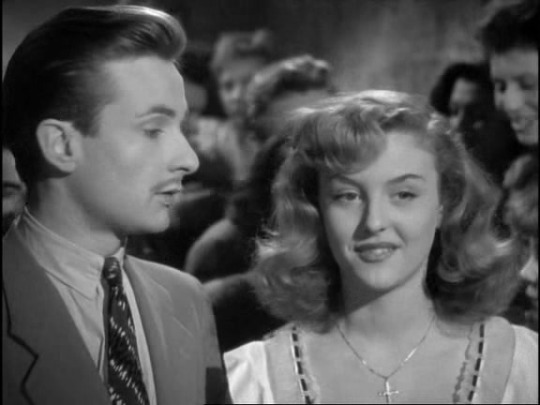
As much as I love Rendezvous in July, it probably wouldn’t be here without Christine. Jacques Becker sees her but her peers do not. He and Nicole Courcel (her debut film) let us see. This is a clique where identity and emotion are defined by your talent and passion. The plight of realizing you don’t have talent, and its unfortunate companion deep insecurity, is an unforgiving thing, especially with friends that don’t recognize or relate to said plight. She is seen by the group as a bit of a vindictive femme. To a degree she is, but it all stems from the fact that she sees beauty as her one sure thing.
At first we see her as her friends do:
In an early scene, she calls Therese (Brigitte Auber, also her debut) to tell her she has a part in Rousseau’s (Henri Belly) new play (her brother is the playwright, getting her in the door). Therese is disappointed about this, and it’s the exact reaction Christine was hoping for. A smirk spreads across her face when she hangs up.
When the time comes, Christine is too nervous to audition for Rousseau; she puts his hand to her chest so he can feel her heartbeat. Sexuality is the only hand she feels she’s got to play in that moment.
She is bad in the play and she knows it. She didn’t need further proof, but during the curtain call the audience gives it to her anyways; a limp round of applause meets her when she steps forward, the opposite of Therese’s lively reception. Audience members share an exchange: “She’s pretty, eh? “Pretty, but very bad”. In the dressing room, she is chastised by Rousseau (who she lost her virginity too) for being sad: “Your dress is great. You look lovely. What more do you want?”.
Every single scene shows how thoroughly unseen this girl is. She is viewed as inferior to Lucien (her romantic interest), told she has no heart; she is even slapped. The list goes on. Some of the men also make selfish decisions (out of pure selfishness as opposed to coming from a place of pain like Christine), and then blame her for their choices. Rousseau chose to cast a girl who doesn’t cut it, only to scream at her for — guess what — not cutting it. Lucien is impulsive and proposes to Christine after making her feel like scum. When Christine is led astray after feeling worthless, just like before, it is she that receives all the disgust. That this girl feels everything is never considered. Indeed, nobody ever shows actual concern for her, or sees her very apparent sadness. A girl who acts out because she feels less than is constantly misunderstood as dumb, not worthy of Lucien, a bad actress, and heartless. Nicole Courcel pours a deep melancholy and ache into this girl looking to be valued, using the only tool she thinks she’s got (the how and who of that be damned). She is the only one with nothing at the end. I think about Christine all the time. Everybody else, with their bubbly spirits and camaraderie, will be fine by virtue of the fact that they are in this film. Except Christine. Christine has more in common with the girls of Au Royaume des Cieux.
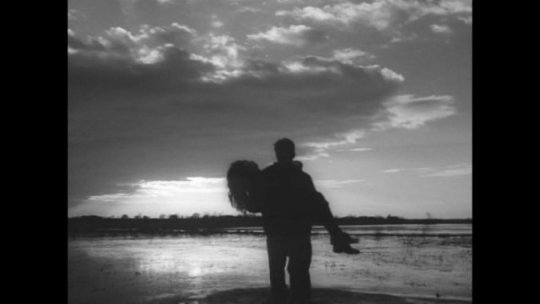
The girls of Au Royaume des Cieux don’t have the luxury of dreams, or even hope. They are just trying to survive in the Haute-Mère reformatory. They are in a far-off and desolate landscape, a place that can only produce rain and mud (another French film from 1949, Such a Pretty Little Beach, uses a very similar landscape as its existential center). There are so many girls — all of them abused, thrown away and/or forgotten. They often huddle together and jam up the frames; it is a crowded and imprisoning space. Most have dabbled in sex work and some have murdered (viewed by society under the same criminal category). They are a rowdy bunch full of pent up lust and the nerve to still act rambunctious despite being beaten down by life.
They have rare allies in a couple of the authority figures, but that is threatened right at the start. A sudden death puts Mademoiselle Chamblas (Suzy Prim) in charge as director, a position she has craved for 20 years. She is the repressed headmistress archetype think Lili Palmer in The House that Screamed (1969)), misogynistic in nature and conception. This is a film full of transgressive streaks of eroticism; talk of same-sex exploits is a near-constant. While the lesbianism and sadism are not conflated, they are linked to establish a place that makes taboo happenings and histories part of the everyday. These girls have no hope that they can or will exist in the outside world, but at least the reformatory is a safer space than they’ve known. With Chamblas as director, all of that disappears and they are thrust into yet more worthless cruelty. But as Chamblas ascends, a girl named Maria (Suzanne Cloutier) enters. It is her purity and goodness that will gradually mobilize everyone into a revolution.
Maria hasn’t been convicted of any crimes, but pervasively unsafe living arrangements have kept her running away from various homes. Like the other girls, she is seen by society and its systems as the problem, punished for daring to endure, retaliate, or do what is needed to get by. Along the way Maria did find love. Real love. And he is coming for her. At first it seems like Au royaume des cieux is going to be about Maria and Pierre (Serge Reggiani) making their escape. Thankfully, it’s about a lot more than that (love and respect to Maria and Pierre who are sweet, but also too sweet). The couple, with their optimism, devotion, and will, come to represent hope for the girls. At first there is much animosity and infighting, but they eventually unite for a bigger cause — themselves. With their secret ingredient (resident anarchist Camille) acting as final inspiration, they riot and take control of Haute-Mère.
Duvivier’s camera singles out the girls as individuals during key moments. We get a brief reckoning glimpse of each; they get the frame to themselves, as if the camera is taking their photograph. It happens when Maria tells them about Pierre. The more she talks about him, the less it seems like a poor girl’s naivete. Some believe she’s either delusional or foolish. But most become convinced. You can see the hope breaking through on their faces. Love is possible. It’s not all manipulation and lies and violence. It happens again when the girls go on a hunger strike in retaliation of Chamblas’s new policies. Days into their starvation, the school director rolls a gigantic steaming pot of soup to the middle of the room where they all sleep, taunting them with the smell to give up their protests. The camera whip-pans back and forth, soup-to-girl, girl-to-soup, through each and every one of them. We feel the whirlwind of individual temptation and suffering, allowed to register that power lies in numbers, but that those numbers are made up of human beings pushing themselves to the brink for the rights they deserve.
—————————————————————————-
Diametrically opposed visions of postwar French youth: the dreamers and the delinquents. Two unknown films by two well-known directors (Jacques Becker and Julien Duvivier). I couldn’t choose between the two; they belong together.
Top Ten By Year: 1949 #9 – Rendezvous in July (Becker) & Au royaume des cieux (Duvivier) (France) Previous Top Ten By Year lists: 1935, 1983, 1965, 1943, 1992, …
0 notes
Text
Săptămâna trecută, la Vila Stanković din Čortanovci – Serbia a început festivalul de teatru ”Novi Tvrđava Teatar” (4 – 9 iulie 2019), la care Teatrul ”Tudor Vianu” din Giurgiu a fost invitat.
Întâmplarea a făcut ca în primele zile ale festivalului să putem compara dramatizări după două piese de teatru scrise aproape în acelaşi timp, la sfârşitul celui de Al II-lea Război Mondial, de doi autori celebri ai secolului XX – Albert Camus şi Bertolt Brecht. ”État de siege” (1948) şi ”Cercul de cretă caucazian” (1949) au amândouă ca motiv critica dură a uzurpatorilor de tot felul, a corupţiei, a inegalităţii sociale. În acelaşi timp, în ambele găsim tema libertăţii de gândire şi a iubirii ca soluţii de succes în lupta oamenilor pentru a răsturna un sistem nedrept bazat pe haos, manipulare şi frică.
Vida Ognjenovici, personalitate renumită a culturii sârbe, directorul artistic al festivalului scrie în Caietul Program: ”Asemenea cuvintelor, teatrul ştie despre noi mai mult decât ştim noi înşine şi mai mult chiar decât am vrea să ne fie dezvăluit”.
Dramatizată sub titlul ”État de siege” în 1948 de însuşi Camus, după celebrul său roman ”Ciuma”, piesa a avut de suportat criticile specialiştilor la vremea aceea. 70 de ani mai târziu, caracterul extrem de puternic al personajelor şi actualitatea temelor sale au permis o nouă adaptare a textului, de data aceasta de către Michele Modesto Casarin şi Andrea Penati, care au păstrat întreg mesajul lui Camus împotriva unui regim totalitar, trimițând spectatorul, cu mijloacele commediei dell’arte – exprimare, gest, mască – în zona grotescului folosit ca armă și a dragostei care susține sacrificiul în vederea salvării de rău.
Michele Casarin, cunoscut regizor şi actor veneţian, director artistic al companiei italiene Pantakin, a fost totodată regizorul spectacolului ”Asediul Veneţiei” – o tragi-commedia dell’arte pe care Teatrul ”Tudor Vianu” din Giurgiu l-a prezentat pe scena festivalului din Serbia, în seara zilei de 5 iulie 2019.
Jucat pentru prima oară sub cerul liber, într-o interesantă formulă de teatru în teatru, în decorul natural mirific al dealurilor Vojvodinei, ”Asediul” a avut un succes deosebit la un public evident avizat şi mare amator de teatru.
Personajul Ciuma, interpretat cu multă energie şi intenţionată ambiguitate de Vlad Bînzoiu, a fost caracterizat de o cronică locală drept întruchiparea răului absolut, ”un caracter brutal și totodată feminizat al unui conducător autoritar irevocabil”. Remarcabilele personaje Zanni şi Ţiganca au creat o canava de mare efect pentru întregul spectacol, în cel mai curat spirit al commediei dell’arte. Personajul Zanni, adus cu mult umor în scenă de Robert Poiană, este un clasic al genului – omul de la ţară venit la lucru în Veneţia, care le zice naiv şi fără prea multă gândire, fără altă grijă decât burta şi vinul, încât nici Moartea care bântuia oraşul nu a găsit vreun motiv să îl bage în seamă. El este cel ce ţine publicul cu zâmbetul pe buze.
Ţiganca, din contră, în interpretarea bine aşezată şi echilibrată a Anei Siva Daponte, este un personaj misterios, cu o filosofie de viaţă bazată pe experienţă şi intuiţii; nu îi e frică de nimeni şi nu o poţi păcăli. Personajul Capitano este în commedia dell’arte un soldăţoi laudăros, gălăgios și fălos, ameninţându-i deseori pe ceilalţi cu spada. În ”Asediul Veneţiei” Lavinia Cosma, într-o interpretare cu un mare consum de energie, perfect credibilă în rolul său în travesti, creează un nemernic, braţul înarmat al unei stăpâniri pe care o ascultă orbeşte, fie că e vorba de Dogele Veneţiei sau mai apoi de Ciumă.
Anca Pascu creează o graţioasă şi falsă tovarăşă de ticăloşii a Ciumei, o nostalgică dar neiertătoare Damă în negru.
Perechea Diego – Vlad Teodorov şi Victoria – Georgiana Vraţiu este purtătoarea ideii de salvare prin dragoste şi sacrificiu de răul dictaturii şi arbitrariului; o pereche romantică, în contrast cu celelalte personaje mai degrabă groteşti, tenebroase. Cel căruia regizorul i-a dat în grijă să îi lege pe toţi aceşti comedianți în trupa ”Senza Dimora” (cei fără adăpost, n.n.) este Cosmin Creţu într-un triplu rol: Marc Antonio Romanesi – Șeful comedianţilor, Dogele şi Barcagiul. El a impus ritmul alert şi nivelul de energie al spectacolului şi a adus pe scenă maturitatea artistică atât de necesară echilibrului dintre jocul „liber” şi cel imaginativ al commediei dell’arte.
Scenografia semnată de Olimpia Damian a creat un spaţiu autentic al epocii în care publicul recunoaşte personajele pe podurile şi podeţele veneţiene, în costume ce trimit la atmosfera secolului al XVII-lea, când oraşul din lagună era bolnav sub puterea cumplitei ciume.
O zi mai târziu, în seara zilei de 6 iulie, am văzut pe Scena Mare a Teatrului Naţional din Novi Sad o coproducţie a Teatrului Naţional din Sarajevo şi festivalului MESS: piesa lui Brecht, ”Cercul de cretă caucazian”. O trupă mare, cu multă experienţă, condusă de cunoscutul regizor Paolo Magelli, profesor asociat al Academiei de Teatru al Universităţii din Zagreb şi fost director general al Teatrului Metastazio din Prato, Toscana.
Cu această piesă Magelli a câștigat la Novi Sad premiul pentru cea mai bună regie, actorul Ermin Bravo premiul pentru cel mai bun actor (în rolurile Cântăreţului şi cel al lui Azdak) iar Maja Izetbegovic premiul pentru cea mai bună actriță (în rolul Gruşei).
Pe scenă s-a desfăşurat un spectacol construit asemeni cu cel al lui Camus, o zi mai înainte: o poveste în poveste. Pentru spectatorul nevorbitor de limbă sârbă care sunt, am văzut în regia lui Magelli, în realismul ameninţător al decorului lui Milna Ler şi al costumelor semnate de Leyla Hodžič cenuşiul vieţii care se ascunde ca să scape de moarte şi strigătul victimelor unui sistemul corupt, al domniei fărădelegii. Sacrificiul continuu al Gruşei pentru salvarea copilului abandonat – de la siluirile morale şi fizice şi acceptarea unei căsătorii întâmplătoare, ticăloşite – se sfârşeşte odată cu miracolul judecăţii simbolice prin care Azdak judecătorul îi acordă copilul. Discursul epic binecunoscut al dramei a fost susţinut cu mare meşteşug actoricesc de actori şi s-a păstrat în mişcarea scenică de care aveam nevoie, în lipsa vorbelor, ca să identific şi să înţeleg desfăşurarea naraţiunii. Muzica însoţește povestitorul cântăreţ, dramele născute de ororile războiului, crimă şi haos şi intervine obsesiv la vioară ca temă principală în parabola judecăţii lui Solomon. Perfect justificată şi interesantă soluţie a regizorului – în momentele culminante actorii se strâng într-un fel de cor antic pentru a comenta şi a îndrepta atenţia spectatorului către ceea ce regizorul consideră important. În oglindă cu ”Asediul Veneţiei”, am găsit în dramatizarea ”Cercului” brechtian ideea că sacrificiul născut din dragoste poate fi salvarea dintr-un sistem de non-valori umane. Mai mult, sacrificiul Gruşei şi judecata lui Azdak dovedesc convingerea autorului că doar omul simplu poate să acţioneze cu dreptate.
Chiar dacă cei doi dramaturgi sunt foarte apropiați în convingerile lor, sunt foarte diferiţi ca opţiuni ideatice şi modele de creaţie: Camus – eseist şi romancier existenţialist mai mult decât dramaturg, Brecht – dramaturg şi poet, marxist pe viaţă; Camus luptă în război în rezistenţa franceză în timp ce Brecht trăieşte ameninţările nazismul în exil. Dar atât ”Asediul Veneţiei” cât şi ”Cercul de cretă caucazian” au o temă-parcurs comună, specifică de fapt literaturii secolului XX: disperare – speranţă – salvare.
In zilele ce au urmat festivalul ”Novi Tvrdjava Teatar” a continuat cu ”Evantaiul” după Carlo Goldoni şi ”Troienele” lui Euripide şi s-a închis cu spectacolul studenţilor clasei profesor Vida Ognjenović, ”Zenidba i Udadba” de Jovan Sterij Popović.
Când am plecat spre România, o furtună teribilă se abătea peste Fortăreaţa Petrovaradin din Novi Sad, unde un alt important eveniment cultural se încheia, marele festival de muzică rock, indie și electronică EXIT.
10 iulie 2019
”Două teatre, doi autori, un festival în Serbia” de Călin Șabac Săptămâna trecută, la Vila Stanković din Čortanovci – Serbia a început festivalul de teatru ”Novi Tvrđava Teatar”
#Albert Camus#Bertolt Brecht#Călin Șabac#Cercul de cretă caucazian#commedia dell arte#cronica de teatru leviathan.ro#Michele Casarin#Serbia#Stare de asediu#Teatrul Tudor Vianu Giurgiu#”Novi Tvrđava Teatar”
0 notes
Link
The galaxy far, far way is feeling closer and closer. This weekend’s release of Solo: A Star Wars Story gives audiences a new Star Wars Film-to-watchonline just a mere five months after the previous entry, The Last Jedi. What once seemed like limited events are now commonalities as the episodic Star Wars Film-to-watchonline s have given way to Star Wars stories, spinoffs that flesh out the moments in between episodes. There’s nothing wrong with more Star Wars. In fact, with all of the capes and costumes that dominate the box office, it’s refreshing to have something a bit different in the form of these serialized sci-fantasy spectacles. Though so far, these Star Wars spinoffs — Rogue One (2016) and Solo — while enjoyable, stick a little too close to blockbuster formula to entirely be considered counterprograming. Solo's lower than expected box-office returns suggest it's time to reassess the purpose and potential of the stand-alone Film-to-watchonline s.
The central episodic Film-to-watchonline s, Star Was: The Force Awakens (2015) and Star Wars: The Last Jedi (2017) recalibrated and deconstructed the Star Wars franchise, offering us new characters to love, and mysteries that are engaging in their infinite possibilities. But the spinoffs so far have told stories that are already largely charted. Going into Gareth Edwards’ Rogue One, we knew by way of A New Hope (1977) that the rebels who stole the Death Star plans succeed. Similarly, Ron Howard’s Solo, though it does a better job of setting up new mysteries than the previous spinoff, is ultimately telling a story where we know where Han will end up, and which characters will meet their ends before the events of the original trilogy. Sure, prequels can still engage us and give us strong emotional responses, but they never feel like the same achievement as those Film-to-watchonline s that push for forward motion. If these spinoffs are intent on using recognizable characters and events, how can they achieve the narrative complexity and mystery of the central Episodes?
LucasFilm-to-watchonline has a slew of spinoffs centered around various characters in development. One of those is the long requested Obi-Wan movie, which has The Reader director Stephen Daldry circling the project. Though Obi-Wan is exciting, it ultimately falls into the same pitfalls as the other two released spinoffs in that we know exactly where Obi-Wan’s fate is headed. The central, and most exciting announcement from Thursday's news is that James Mangold has been tapped to direct a Boba Fett movie, which he will co-write alongside producer Simon Kinberg. It’s through Mangold that the potential for these spinoffs finally gets interesting.
It should be said that Boba Fett, as he exists in the Film-to-watchonline s, is not an interesting character. The Mandalorian Bounty Hunter first appeared in the Star Wars Holiday Special (1978), which has to be seen to be believed. As the only decent thing to come out of that special, Fett (Jeremy Bulloch) went on to have a small part in The watchonline Strikes Back (1980), and Return of the Jedi (1983), where he was infamously and unceremoniously eaten by the Sarlaacc. Other than a cool design and a cool ship, Boba Fett has never really done anything to earn his cult status among Star Wars fandom. George Lucas fleshed out the character’s background in Attack of the Clones (2002), where Boba Fett (Daniel Logan) was revealed to be the unaltered clone of famed bounty hunter Jango Fett (Temuera Morrison). While Boba’s story was expanded slightly in the canon Star Wars: The Clone Wars (2008-2014) animated series, and more significantly in the non-canon Expanded Universe literature, his role in the Film-to-watchonline s has always been slight. Because Boba Fett exists as a cipher, there’s plenty of room for Mangold and Kinberg to redefine the character on their own terms. And hopefully, they’ll officially retcon the fact that one of the galaxy’s so-called greatest bounty hunters died in a fang-studded sandpit, and tell a post-Return of the Jedi story of a character whose future isn’t yet set.
Mangold has proved time and again his ability to surprise us, not only with story, but with emotional depth as well. While within the circle of fandom, Mangold is best known for The Wolverine (2013) and the Oscar-nominated Logan (2017), he has consistently put out grounded character work outside of geek-friendly Film-to-watchonline s. His Film-to-watchonline s 3:10 to Yuma (2007) and Cop Land (1997), among others, showcase a director drawn toward breaking down character types and muddying the waters of morality that so many star-driven action Film-to-watchonline s cling to. His Film-to-watchonline s are sad and subtle, but ultimately life-affirming endeavors that showcase characters who could not be anything but what they are. Sometimes this means that Mangold’s protagonists have to find themselves first, but in the end, they ultimately feel like people who have come to terms with who they always were and wanted to be. Boba Fett’s status as a clone, as an unoriginal man bred for an unoriginal purpose, and the successor of a storied heritage he didn’t choose has fascinating potential. There’s the possibility that, even separated by galaxies and entire universes of lore, Mangold’s Boba Fett Film-to-watchonline could further some of the themes of legacy that Logan explored. Cop Land, 3:10 to Yumaand Walk the Line (2005) all dealt with men who struggled with the weight of the badges or symbols around which their mythos have been constructed, and managed to redefine themselves. Mangold can continue to tell this story, not only through Boba Fett, but through an entire underworld of bounty hunters with cool designs and zero emotional weight waiting to be made anew.
So far, the Star Wars spinoffs, have featured a diverse range of characters, but many of them feel like archetypes, first-draft placeholders meant to move the plot along and provide winking references to the audience. We care little about when they die, and they are often such blank slates that they could use a spinoff of their own just to make us care about their fates. Rogue One felt stuffed with underdeveloped characters, an ensemble piece that never came together with a sense of camaraderie. Solo does a better job at developing each character, and creating energetic banter amongst them, but when it comes to central players like Han (Alden Ehrenreich) and Lando (Donald Glover), there’s a certain expectation attached to their performances given that other actors iconically originated their roles. Solo is saved by the fact it starts far enough back from A New Hope that these characters’ stories could be sustained across several Film-to-watchonline s, and these actors don’t have to play these characters exactly as they were depicted in the original trilogy. Rogue One, on the other hand, has the benefit of all-new lead characters, but kills them all off before we ever get a chance to really know them or buy into their growth. These are highly watchable, enjoyable Film-to-watchonline s that deal with a lot of surface emotions and the utilization of tropes from the genres they’re echoing (the war Film-to-watchonline , the Western/heist Film-to-watchonline , respectively). This has led to some great moments, but they’re within Film-to-watchonline s that have yet to redefine this universe outside of what we already know.
Arguably, much of Star Wars has been built on surface emotions and narrative echoes, as is the way of myth and any property founded on Joseph Campbell’s The Hero With a Thousand Faces (1949). This has been the case since George Lucas first brought this galaxy to life. And we love Star Wars, the entirety of it, because of that. But The Force Awakens and, more boldly, The Last Jedi have added new layers of character subtlety, partially breaking up the circular heroes’ journey, and have made allusions to the Film-to-watchonline s they were influenced by without adhering to their rules or tones. It’s time for these spinoffs to pick up the lightsaber ignited by Rian Johnson, and do away with some of our expectations of who we thought these characters were and what they’d do. Boba Fett is currently the equivalent of a nicely dressed mannequin, but a spinoff in Mangold’s hands could bring him to life and make him a fully fleshed out character. If taken advantage of, Fett is the closest opportunity these spinoffs have had so far to create a character whose story isn’t dictated by the larger episodes it exists between. Boba Fett may not be the entirely uncharted territory many fans desire for these Star Wars spinoffs, but with Mangold at the helm it’s a safe bet that we’ll get A Star Wars Story more complex than the two we’ve seen thus far — a Film-to-watchonline that’s not just good, but challenging in the way that Star Wars, after over 40 years, should finally be.
Solo: A Star Wars Story
0 notes
Text




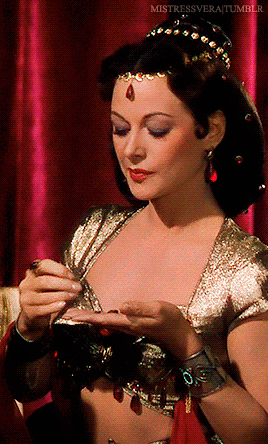
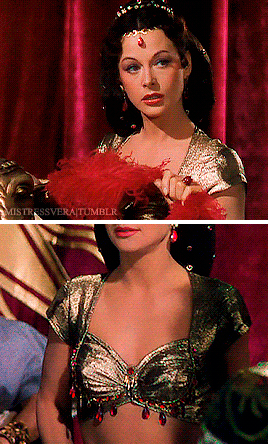


Samson and Delilah (1949) costume appreciation: 3/∞
costume design by Edith Head, Dorothy Jeakins, Elois Jenssen, Gile Steele, Gwen Wakeling
Period dramas | costume appreciation: 11/∞
#samson and delilah#hedy lamarr#costumeedit#1940s movies#periodedits#perioddramasource#historicwomendaily#period drama costumes#onlyperioddramas#perioddramaedit#sad 1949 costumes#gifshistorical#filmedit#classicfilmblr#classicfilmsource#perioddramacentral#costumesource#filmgifs#weloveperioddrama#filmtvdaily#tvfilmgifs#filmtvedit#tvfilmedit#costumes#tvfilmsource#tvfilmdaily#fyeahmovies
79 notes
·
View notes